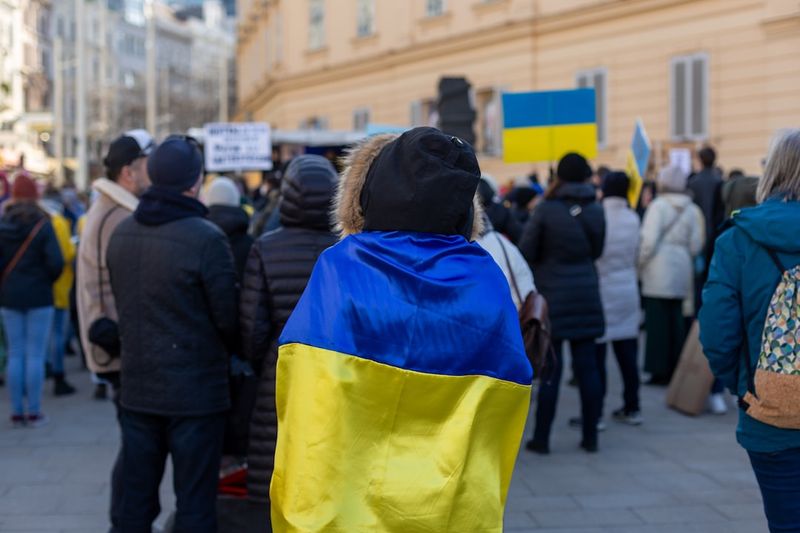The Art of Diplomacy: Examining the Historic Encounter between Henry Kissinger and Xi Jinping
Introduction
In the complex and ever-changing world of international relations, diplomacy remains a crucial tool in managing conflicts and fostering cooperation between nations. One of the most notable examples of diplomatic prowess is the recent historic encounter between former U.S. Secretary of State Henry Kissinger and Chinese President Xi Jinping. This meeting marked a significant moment in the ongoing relationship between China and the United States, and it offers valuable insights into the art of diplomacy.
Background
Henry Kissinger’s name has become synonymous with diplomacy. As the United States’ top diplomat during the Nixon and Ford administrations, he played a pivotal role in opening up relations with China in the early 1970s. His famous secret mission to Beijing laid the groundwork for the historic meeting between President Richard Nixon and Chairman Mao Zedong. Kissinger’s approach to diplomacy emphasized building personal relationships and finding common ground among adversaries.
Fast forward nearly five decades later, and China has transformed into a global power under the leadership of President Xi Jinping. As the face of modern China, Xi has sought to assert his country’s dominance on the world stage while maintaining stable relationships with other nations. The encounter between Kissinger and Xi offered a unique opportunity for these two influential figures to engage in dialogue and bridge the gap between two eras of diplomacy.
Philosophical Discussion
The meeting between Kissinger and Xi provides an excellent backdrop for exploring the philosophical underpinnings of diplomacy. At its core, diplomacy is about finding peaceful resolutions to conflicts and building understanding between nations. It requires trust, empathy, and a deep appreciation for cultural differences.
Trust and Empathy
Trust is the currency of diplomacy. Without trust, negotiations and agreements become fragile and easily unraveled. The historic encounter between Kissinger and Xi highlights the importance of trust-building in international relations. Kissinger, famous for his ability to navigate complex power dynamics, understood that trust can only be established through meaningful dialogue and genuine empathy for the concerns and aspirations of other nations.
Cultural Understanding
Cultural understanding is another essential component of successful diplomacy, especially when dealing with nations as culturally distinct as the United States and China. This encounter allowed Kissinger and Xi to exchange perspectives, uncover shared values, and gain a deeper understanding of each other’s cultures. By appreciating and respecting cultural differences, diplomats can avoid misunderstandings and find common ground for effective collaboration.
Editorial: Lessons for Future Diplomacy
The meeting between Kissinger and Xi holds valuable lessons for future diplomatic endeavours. As the world becomes more interconnected, the need for skilled diplomats who can navigate complex global challenges is increasingly crucial.
Importance of Personal Relationships
The encounter between Kissinger and Xi underscores the importance of building personal relationships in diplomacy. In an era of digital communication and remote interactions, face-to-face meetings and direct conversations remain unparalleled in their ability to foster deep understanding and trust. Future diplomats should prioritize personal engagement and invest time and effort in building genuine connections with their counterparts.
Adaptability and Strategic Patience
The success of Kissinger’s diplomacy with China was not achieved overnight. It required strategic thinking, patience, and an understanding of long-term goals. As diplomacy continues to face complex challenges, diplomats must be adaptable and willing to engage in extended negotiations and dialogue. Rushing into quick fixes and seeking short-term gains can undermine the potential for sustainable and enduring solutions.
Inclusion and Collaborative Diplomacy
The meeting between Kissinger and Xi serves as a reminder of the value of inclusive and collaborative diplomacy. By including multiple stakeholders in the decision-making process, diplomats can ensure that the concerns and interests of all parties are adequately addressed. This approach fosters ownership and buy-in from all parties involved, leading to more durable agreements and fruitful collaborations.
Advice: Applying Diplomatic Principles
The Kissinger-Xi encounter offers insights that can be applied to current and future diplomatic endeavors.
Build Trust through Dialogue
Diplomats should prioritize direct dialogue and open communication to build trust among adversaries. By engaging in meaningful conversations, diplomats can identify areas of common interest and create space for constructive engagement.
Invest in Cultural Understanding
To bridge cultural gaps, diplomats need to invest time and effort in understanding the history, traditions, and values of other nations. By developing cultural fluency, diplomats can navigate through potential misunderstandings and establish stronger connections.
Embrace Strategic Patience
Diplomatic negotiations often require time and strategic patience. Diplomats must resist the temptation for quick fixes and instead focus on long-term solutions that are in the best interest of all parties involved.
Promote Inclusion and Collaboration
Inclusive and collaborative diplomacy ensures the voices of all stakeholders are heard and considered. Diplomats should actively seek opportunities to engage diverse perspectives and foster a sense of ownership among involved parties.
Conclusion
The historic encounter between Henry Kissinger and Xi Jinping stands as a testament to the enduring relevance of diplomacy in shaping global affairs. By embodying the principles of trust, empathy, and cultural understanding, diplomats can navigate complex international relations and build bridges between nations. As the world continues to face challenges and opportunities, the lessons learned from this encounter should serve as a guide for future diplomatic endeavors.

<< photo by Tetiana SHYSHKINA >>
The image is for illustrative purposes only and does not depict the actual situation.
You might want to read !
- “Xi Jinping and Henry Kissinger Reunite: A Strategic Alliance Reshaping Global Dynamics”
- “Apologies, PM: Joe Biden’s Right – Xi Jinping Truly Embodies…”
- Exploring the Complex Legacy and Ongoing Controversy of Bruce Pascoe’s Dark Emu
- “Caroline Calloway’s Scandalous Saga: The True Confessions of a Cambridge Con Artist”
- Ukraine’s Bold Admission: Taking Ownership of Latest Assault on Critical Crimea Bridge
- “Petulant Pitt: Did the Hollywood Star Truly Loot His Own Provence Vineyard?”
- Cluster Bombs Unveiled: Deciphering the US-Ukraine Controversy
- “Anticipation and Analysis: The Upcoming Lock-In of Australian PM Anthony Albanese’s Visit to China”
- What Joe Biden Left Unsaid: Unspoken Words to Narendra Modi




